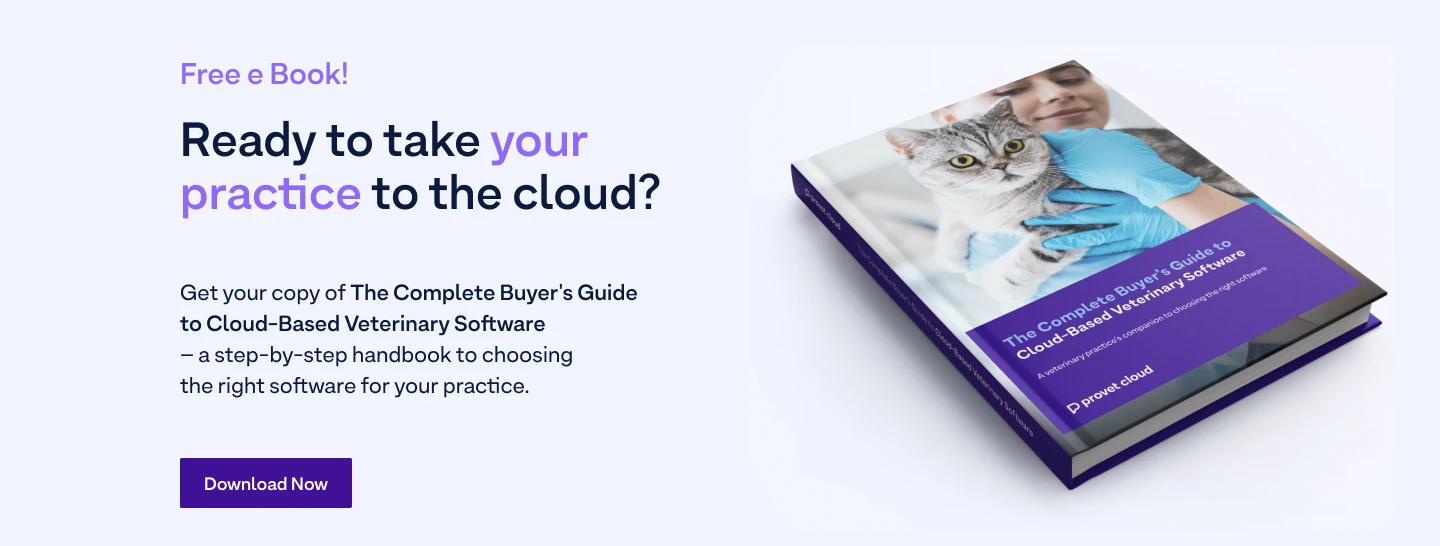The search for new veterinary practice management software demands a great deal of preparation, collaboration, and patience. And when you have seen every software demo and learned everything there is to know about your cloud-based software options, it will be time to narrow down your selection and, finally, choose the one that works best for you.
{{cta('156522267548')}}
The decision will either be easy or leave you conflicted – maybe stranded between two or three possible solutions. In any event, let’s attempt to boil down all your research and acquired knowledge into one last set of questions on which to reflect and (hopefully) take action.
- Is cloud-based software right for my practice?
- Does the software include the features I need?
- Is it user-friendly?
- Can it integrate well with third-party tools?
- Does it offer robust data security?
- Will it scale as my practice grows?
- Does it include comprehensive training and support?
- How much does veterinary software cost?
- What do other customers say about the software?
- Can I invest in learning a new veterinary software system?
1. Is cloud-based software right for my practice?
With your understanding of its features and benefits – such as online booking, remote access, automatic updates – along with a sense of your goals for improving practice efficiency and productivity, decide whether you still prefer a cloud-based system to a server-based system.

2. Does the software include the features I need?
Ensure that it covers all the essential functions you require to run your practice smoothly – and hopefully even more smoothly.
3. Is it user-friendly?
The user interface should be clean, modern, and intuitive, making it easy for staff to navigate and perform tasks efficiently. If it feels more complicated than your current system, you risk adding new challenges and frustrations.
4. Can it integrate well with third-party tools?
Whether it’s the essentials, such as laboratory equipment or payment processing, or the non-essentials, like telemedicine or online pharmacy, make sure the software can integrate with the applications you need to enhance workflows.
5. Does it offer robust data security?
Data protection should be high on your list of priorities in a cloud-based system. Make sure the software is compliant with data protection regulation (e.g. GDPR and HIPAA), adheres to the highest encryption standards, and conducts regular data backups.

6. Will it scale as my practice grows?
The scalability of cloud-based software should almost be a given. No matter how many patients and appointments you see or how many users across multiple locations are operating the software, you should not see a decrease in the system’s speed or performance.
7. Does it include comprehensive training and support?
Look for a provider that emphasizes strong, responsive customer service and a people-focused approach to training you on their system. Also inquire about ongoing access to training resources (videos or user manuals) and opportunities to learn about new software features, such as through Facebook user groups or message boards.
8. How much does veterinary software cost?
Read the pricing structure very carefully, noting all upfront costs associated with a subscription, additional fees for extra features or implementation, and how pricing may change as your practice grows. Consider whether higher costs at the beginning may result in long-term savings as your new system contributes to faster revenue growth.
9. What do other customers say about the software?
Research veterinary software reviews online (e.g. Capterra), read available case studies, and ask the vendor if they can connect you with one of their current customers as a reference. Their experience with the software can add valuable insights into its reliability as well as the quality of customer support.
10. Can I invest in learning a new veterinary software system?
This last question should not be overlooked. As you move forward with the decision to adopt new practice management software, be prepared for the time and staff energy that will be required to become proficient in it. Consider appointing one or two members of your staff as project leads – to serve as primary contacts with the software provider and to champion the effort to train the team on the new system. You may even assign “specialists” who can learn specific aspects of the software and become in-house experts on tasks such as inventory management or creating medical templates.
With patience and due diligence, you should be able to find a veterinary software program that fits best and delivers all the benefits of running your practice in the cloud.
Gather more tips and hacks for your veterinary software search!
Download our free eBook:
The Complete Buyer's Guide to Cloud-based Veterinary Software





